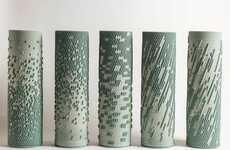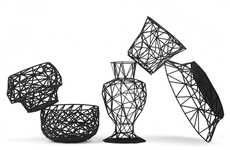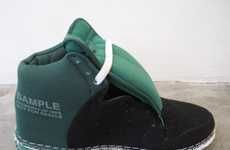
The '3D-Printed Music' Project Transforms Music into Sculptures
Alexander Lam — June 14, 2013 — Art & Design
References: fastcoexist
With the help of a 3D printer, Rickart Dahlstrand managed to visualize music with an extra dimension in his '3D-Printed Music.' Using a 3D printer exclusively, the artist generated both the music and its visualization.
Through the stepper motors of a printer, Dahlstrand played music while drawing out a design. The motors on a 3D printer can be programmed to play different sounds by making them go faster or slower. As a result, Dahlstrand was able to recreate popular songs while printing out their visual representations in 3D.
While the motor was moving at variable speeds, the artist made sure it printed out plastic. Using this technique, he created works that celebrate pieces such as John William’s 'Imperial Death March' and Georges Bizet’s 'Habanera.'
Through the stepper motors of a printer, Dahlstrand played music while drawing out a design. The motors on a 3D printer can be programmed to play different sounds by making them go faster or slower. As a result, Dahlstrand was able to recreate popular songs while printing out their visual representations in 3D.
While the motor was moving at variable speeds, the artist made sure it printed out plastic. Using this technique, he created works that celebrate pieces such as John William’s 'Imperial Death March' and Georges Bizet’s 'Habanera.'
Trend Themes
1. 3d-printed Music Visualizations - Using 3D printers to transform music into physical sculptures, opening up new possibilities for immersive music experiences.
2. Stepper Motor Sound Manipulation - Exploring the use of stepper motors on 3D printers to play music and create synchronized visual representations, merging technology and arts.
3. Interactive Music Artworks - Combining music and visual art through 3D printing technology, enhancing the sensory experience and blurring the boundaries between mediums.
Industry Implications
1. Music Technology - Integrating 3D printing technology into the music industry, offering unique ways to visualize and interact with music.
2. Visual Arts - Incorporating 3D printing and sound manipulation techniques into the field of visual arts, enabling artists to create interactive and immersive artworks.
3. Entertainment - Using 3D-printed music visualizations to enhance live performances, concerts, and exhibitions, captivating audiences through multisensory experiences.
1
Score
Popularity
Activity
Freshness















